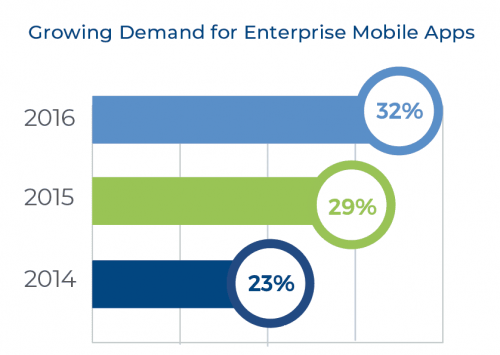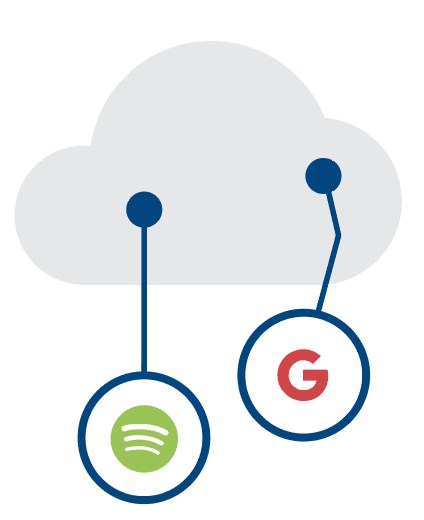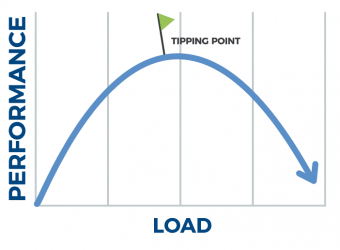Choosing the right time to replatform is always a difficult internal conversation. That is because there is rarely a single, clear, universal realization such a project has become an absolute necessity.
The tipping point for modernization will look different to different companies — and even between departments within the same company — but there are certain telltale signs that the ROI for a replatforming effort is there, waiting to be acted upon.

Replatforming is a big topic, and as a result, we’ve decided to take a look at it from a number of different perspectives. In the second part of our Replatforming white paper series, we’ve decided to take a look at the crucial signs indicating that it’s time to replatform.
Missed part one of our Replatforming white paper series? Download “What is Replatforming?” here.
Five sign’s it’s time
Those waiting for a bright flashing warning light or a screaming fire alarm to alert you that the ROI for a replatforming effort is now worth it, might find themselves waiting forever.
Instead, signs that it’s time to replatform build slowly, often reaching a tipping point in some departments before others. Sometimes replatforming projects are prompted by difficult to implement requirements, other times by increased consumer demand, and some only realize they need to replatform when talent to maintain legacy systems becomes scarce. While the tipping point will look different to different companies — and even between departments within the same company — there are certain telltale signs that the ROI for a replatforming effort is there, waiting to be acted upon. Here are a few signs that are most common.
Top 5 Sign’s You Need To Replatform
Every organization is different. Business environments are different, opportunities are different, challenges are different. On top of that, everyone’s technology situation is completely unique. There is no one formula or set of symptoms that will define the moment your organization needs to replatform. The best organizations can do is watch for some of the telltale signs it’s time to bite the bullet and set out on a path of modernization, and take steps to start the journey.
Unfulfilled customer demand
Lengthy development cycles and time to market
Untenable operating costs
Inability to scale
Developer complaints
Unfulfilled customer demand
Perhaps the most common sign that it’s time for an organization to replatform occurs when their customers begin to demand capabilities, services or products that the organization just can’t provide on their current platform. If these demands aren’t met, these customers may eventually migrate to competitors who can offer the services they’re looking for.
Mobile applications—which typically require access to comprehensive, complex contextual data—will often tax legacy systems beyond their capabilities or capacity. Legacy systems, for the most part, were not designed to accommodate the always-on, mobile processing world of today, and demand for mobile apps is not going away anytime soon.
“In the past several years, a big source of increased demand has been the accelerated need for mobile enterprise applications. For the third year in a row, enterprise demand for custom mobile app development has increased from 23% in 2014 to 29% in 2015 and 32% in 2016.””
– Deloitte’s report on Reimagining Core Systems

Couple increased demand for mobile apps with the tsunami of data streaming from Internet of Things (IoT) devices and other contextual sources and you’re left with a world that demands a great deal from systems built with 1970s technology.
As a result, organizations need to get ahead of customer demand by ensuring their platform is not only capable of supporting the latest and greatest of what’s available today but can also handle additional capabilities that may become vital in the future.
Of organizations believe that if a company hasn’t deployed enterprise mobile apps yet, they’re at a competitive disadvantage.
– cited in a March 2017 ADTMag article

Lengthy development cycles and time to market
In 2009, Toronto-based loyalty commerce platform Points was reaching a tipping point. The fast-growing startup had evolved into a mid-sized company, though its technology stack hadn’t evolved at the same pace. A full decade after the company’s launch it was struggling to keep up with its rapid growth due to the time-to-market constraints of its technology platform and software development process.
From Our Client
“In the past, for our core product, it would take us anywhere from six to nine months from the time we said ‘go,’ to launching a new customer. In addition, to do a minor change within the app, it was getting to a point where it would take nine or ten weeks, which was just stupid,’ explain Peter Lockhard, Point’s Chief Operating Officer.
Lockhard explains that after replatforming—with the help of Intelliware—the time to onboard a new customer dropped in half, and the time it took to make adjustments to the application went from several weeks to days.
“Statements of work or change requests would take eight or nine weeks, and we got that down to less than a week,” he said. “You’re just talking orders of magnitude improvements for launching new customers, delivering applications on top of a platform that’s already running and just day-to-day change requests and statements of work.”
– Peter Lockhard, Chief Operating Officer at Points
Operating cost
Throughout the ‘70s and ‘80s, large transactional systems needed to be built on top of proprietary hardware and proprietary software. That was, and often remains, an expensive proposition. While it’s true that Open Source, platform-agnostic software frameworks have been available for a relatively long time, it’s also true that using those technologies in a large Blue Chip company has only become widely accepted in the past five years or so.

In an effort to become nimbler, while having seen the scale and cost effectiveness of the large consumer companies like Google and Spotify up close, they now realize that it is not only possible, but essential to migrate away from expensive proprietary technologies.
The modern, Open Source, cloud-based technology world the Silicon Valley behemoths operate in is now considered a viable technical strategy in the boardrooms of more conservative Fortune 500 corporations.
A report from modernsystems.com points out, “According the US Department of Defense, average mainframe spend in 2014 sits at a staggering $499.98 per hour, sixteen times the cost of running an equivalent computing environment on a Linux platform with similar performance characteristics.” That report is from four years ago, it was expected to rise 20% per year because of continued increased performance in the Linux world.
This is an enormous cost disadvantage for many legacy systems. If your operating costs are becoming untenable, it’s a good sign that you should consider a replatforming effort.
Such an enormous amount of investment in legacy technology maintenance is undeniably hobbling that sector’s effort to provide a modern digital experience for their customers.
The operating cost problem is not limited to just the Banking sector, either. Modern, Cloud-based, DevOps-friendly, container-oriented technologies have really only been viable for the past three years. As a result, even relatively new systems built in the past decade or so can enjoy cost savings from modernization efforts.
In a 2017 article The Financial News of London suggested that “banks typically spend 80% of their IT budgets on legacy technology mainenance.”

Inability to scale
While improving their development cycles and time to market was a strong motivating factor to undertake a replatforming effort, Lockhard said it was ultimately the stick, rather than the carrot, that broke the proverbial camel’s back.Though the conversation surrounding replatforming had been brought up internally, when the company’s inability to scale threatened its relationship with one of its biggest clients that was a “tipping point” and they concluded it was time to modernize their technology platform.

As Geoffrey Moore points out in his book “Inside the Tornado”, any technology company experiencing rapid growth needs to achieve operational excellence to be able to successfully ride the growth curve. Many times, a company’s legacy platform, be it two years old or twenty, will need to be modernized to support rapid business growth. Sometimes, replatforming is the only option for success.
From Our Client
““They said ‘we want to work with you guys, but you’re just dropping the ball’,” said Lockhard. “We were just not able to keep up.” explain Peter Lockhard, Point’s Chief Operating Officer.
Points was ultimately able to keep that customer by migrating to a more scalable platform, explained Lockhard. “Our business with that one customer grew substantially after we replatformed, and that really put our ROI over the top,” he said.
– Peter Lockhard, Chief Operating Officer at Points
Developer complaints
When determining whether or not it’s time to replatform, the canary in the coal mine often takes the shape of in- house IT staff, according to BC Holmes, Intelliware’s chief technologist.“When your developers start to complain how hard it’s going to be to add a new feature, that’s usually one of the key insights that the application has gotten out of hand,” she said.
Holmes adds that developers often have the greatest insights into technology needs and industry norms. When basic projects become a significant burden it typically means that there are significant efficiencies to be gained by replatforming. Similarly, if organizations are finding it difficult to hire talent that is proficient in the technologies that their platform is built on, and instead have to depend on third party vendors, it may serve as an indication that it’s gotten too far out of date.
Your individual organization’s tipping point on this symptom may vary, but your developers and architects are the people closest to the system. They know best when things have become untenable for further development. Challenge them, but make sure you listen.
As Justice Potter Stewart once famously observed about a very different subject, when it comes to replatforming, “ you’ll know it when you see it.”
At Intelliware, we’ve undertaken dozens of successful replatforming projects, and we are seeing the demand for such efforts increasing enormously. Download our complimentary paper now and learn more about practices and strategies that will help you to make your replatforming program a successful one.

